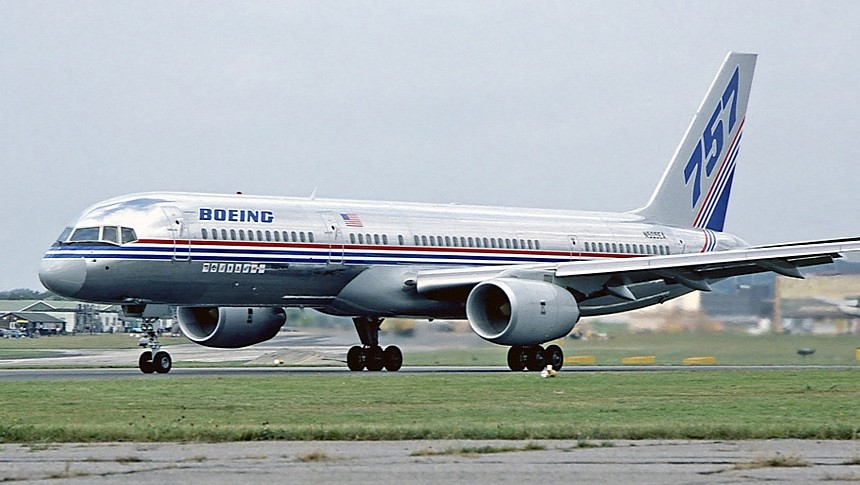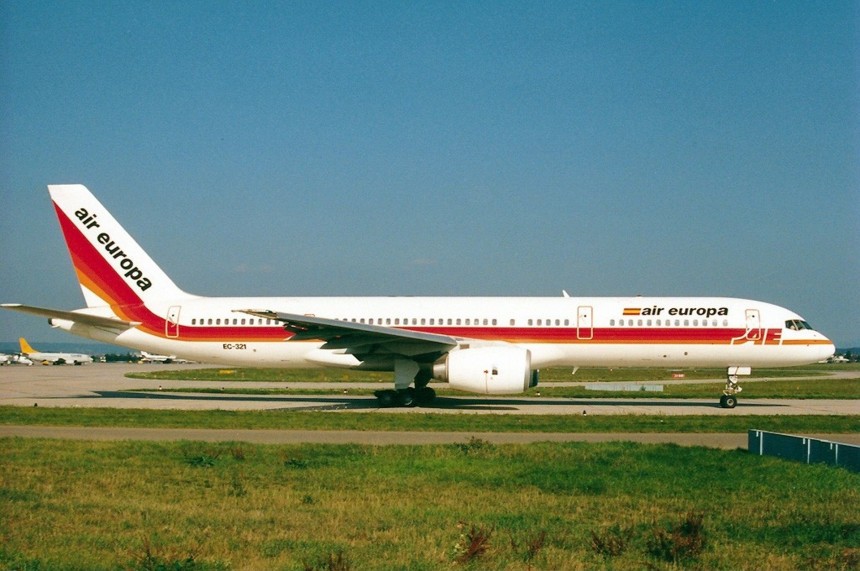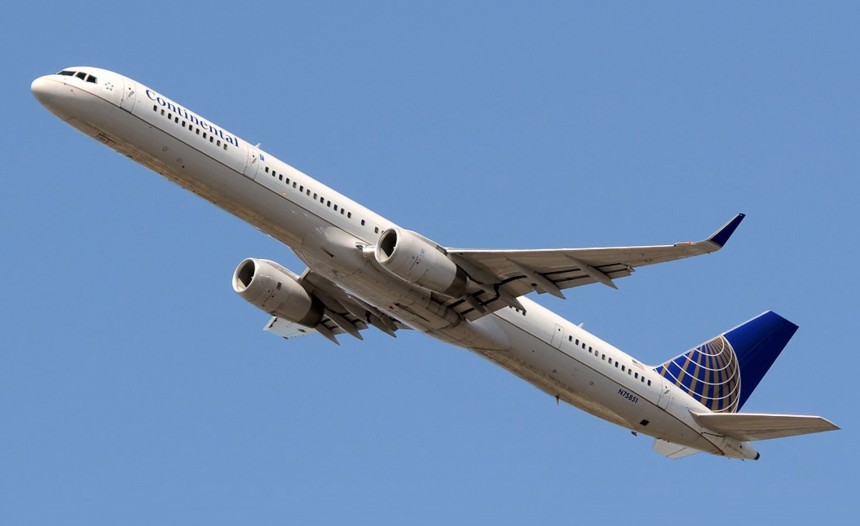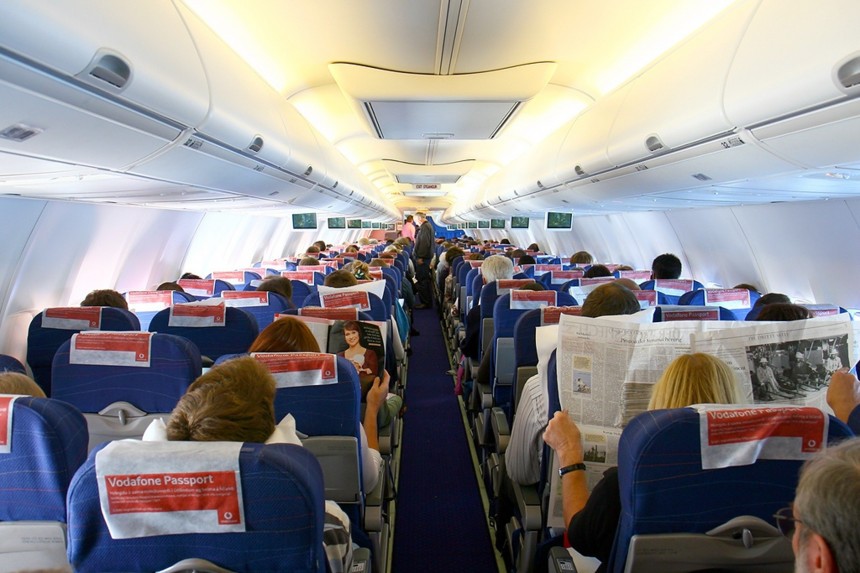In a lot of ways, the Boeing 757 is built like Mike Tyson. They aren't the biggest frames in the world by any means, but both packed a punch far beyond their stature. Ham-fisted analogies between boxers and civil airliners aside, the 757 was a rare bird in the airliner space because it was overpowered for its size. Even at a glance, it makes sense why hot rod airliners seldom exist in a sector where thurst-to-weight figures can mean the difference between billions in profits and total failure.
But after a global crisis nearly brought the airline industry to its knees, such a special breed of jet could have easily gone extinct. The 757's story is one of cunning innovation, constant market turbulence, and an uncommon excess of power. But to understand how this narrow-body, twin-jet beast came to be in the first place and why it's so vital it stays in service indefinitely now, we need to go back to the early 1970s. A time when flying on domestic airlines wasn't a royal pain in the ass. At this time, Boeing maintained a far larger dominance over the civilian airliner space than they do today.
Apart from McDonnell Douglas and Lockheed to a lesser extent, the Boeing consortium of the 707 and its shortened cousin, the 720, and the 727 narrow-body tri-jet accounted for a higher share of domestic and international routes than any other point in the age of the jetliner. With their future mortal rivals at Airbus still in their infancy, it was Boeing or nothing in the airliner space in most instances. But as the 70s rolled along, Boeing knew its existing fleet of 727-100s and stretched 727-200s weren't going to cut it forever.
If anything, the 727 carried a reputation as one of the noisiest airliners in the biz. With large hush kits needing to be installed in all three of its engines to comply with federal noise laws, Boeing knew a wholly bespoke airframe was needed to replace the 727 sooner rather than later. Of course, simply elongating the 727-200's airframe yet again was one option on the table. But another option, a completely novel airframe designed from scratch, was far more tantalizing. The promise of novel space-age building materials in its construction and a larger airframe capable of carrying even more passengers ultimately made this decision a total slam dunk.
Dubbed the 7N7 during its development phase, what Boeing required was a long, narrow-body airframe with two wing-mounted engines and a capacity to carry at least 160 passengers or even more with an extended fuselage variant. As a result of fuel price instability after the Yom Kippur War and the subsequent OPEC oil embargo of 1973, fuel efficiency was a point of concern far more so than on previous Boeing jets. While simultaneously balancing the need for powerful engines to take off from smaller, shorter runways, it was a tightrope balancing act that could only be solved with top-notch engineering.
The benefit of Boeing's 767 (7X7) wide-body twin jet being developed nearly concurrently with the narrow-body 7N7 paid dividends for both aircraft. The new 7N7 received an almost 2,000 sq ft (185 m2) supercritical wing swept to 25 degrees, designed to delay the onset of aerodynamic drag as the wing travels through turbulent air along its flight path. But none of this would be worth much without a powerhouse of an engine to work with. Ultimately, the 7N7's launch customers, British Airways and Eastern Airlines, selected the Rolls-Royce RB211-535C high-bypass turbofan engines to power their new jets.
After a decade-plus of planning and development, the first 7N7 prototype took to the skies on February 19, 1982, and entered service on New Year's Day the following year. The now-defunct Eastern Airlines was the 757's first commercial client, the first of several dozen more soon to come. Deliveries continued for almost a quarter century between 1981 and 2004; a total of 1,050 airframes were manufactured in this time. Of these, the vast majority were 757-200s, with a much smaller portion being the elongated 757-300.
With power figures upwards of 37,400 pounds (166 kN) of thrust per engine at full throttle, it was the first time Boeing contracted a non-domestic engine supplier for one of its jetliners. Consequently, Pratt & Whitney also offered an engine for the 7N7, the PW2037, jetting 38,200 pounds (170 kN) of thrust each. For a pencil-thin, narrow-body jetliner, that kind of power is almost unheard of. In the all-important area of runway performance, a 757 can easily take off from a dead standstill somewhere between 6,000 and 7,000 feet (1,829 m- 2,133m), traveling about 140 knots.
For reference, this figure is dead even with later variants of the smaller Boeing 737, and it outright beats its earlier less powerful variants. Is it any wonder pilots lovingly call the 757 a sports car in the sky yet? If anything, it's more like a Velociraptor 6x6 with how long it is. But good luck shoving 239 passengers in one of those like the 757-200 can manage. For this reason, the 757 can service lower-traffic regional airports just as well as it can the busiest and most massive international airports in the world.
With dimensions of 155 feet, three inches (47.3 m) long for the 757-200 and 178 feet, seven inches (54.4 m) in the further-stretched 757-300, a max takeoff weight between 255,000 lbs (115,660 kg) and 273,000 lb (123,830 kg) is only marginally lower than larger wide-body jets like the 767. When accounting for the weight of the cargo alone, the 757-200 can haul up to 57,160 lb (25,920 kg) of baggage in its passenger-liner variant and an impressive 84,420 lb (38,290 kg) in its 200F freighter configuration. There was even a bizarre one-off Combi 757 that carried mail as well as passengers for Royal Nepal Airlines.
Every 757 operator from Delta to American, FedEx to DHL and even the U.S. Vice president aboard the custom C-32 version takes advantage of this jet's stunningly impressive climb profile. A rapid pace of 6,000 (30.48 m/s) is easily at hand when 757s climb at full throttle. At the other end of this drag race, a max-altitude of 42,000 feet (13,000 m) awaits while cruising at 80 percent the speed of sound. This makes transcontinental flights across North America, Europe, Asia, and South America a breeze in this particularly special twin jet. The occasional intercontinental route between these places, like Atlanta to Brazil, Reykjavik to San Francisco, or New York to London, is well within the 757's capability as well.
On paper, it looked like Boeing's flagship narrow-body jet was going to be a stalwart of the skies pretty much indefinitely. But as the global health crisis wrapped a stranglehold around the airline industry in 2019 and 2020, a multitude of 757 operators saw the type's rapidly advancing age as the perfect impetus to retire their fleets, with global market shutdowns cited as the prime contributing factor. As of 2023, only 20 passenger airlines still operate the type in regular service. One of the 757's most prominent operators, Icelandair, expects to retire its whole fleet by 2026.
Will Airbus be able to exploit the market vacuum for high-capacity, narrow-body jetliners? Upcoming additions like the A321XLR indicate this is the intention. But even so, perhaps no narrow-body, twin-jet built before or since will be so delightfully overpowered as the 757. But also consider that it's one thing for a supersonic airliner like Concorde to make ludicrous amounts of power. But for a civil passenger jet meant to carry mostly economy class passengers to be this beastly, now that's something people ought to respect. For building perhaps the only hot rod airliner ever built, we owe the 757 our thanks.
Check back soon for more exciting modern aviation profiles right here on autoevolution.
Apart from McDonnell Douglas and Lockheed to a lesser extent, the Boeing consortium of the 707 and its shortened cousin, the 720, and the 727 narrow-body tri-jet accounted for a higher share of domestic and international routes than any other point in the age of the jetliner. With their future mortal rivals at Airbus still in their infancy, it was Boeing or nothing in the airliner space in most instances. But as the 70s rolled along, Boeing knew its existing fleet of 727-100s and stretched 727-200s weren't going to cut it forever.
If anything, the 727 carried a reputation as one of the noisiest airliners in the biz. With large hush kits needing to be installed in all three of its engines to comply with federal noise laws, Boeing knew a wholly bespoke airframe was needed to replace the 727 sooner rather than later. Of course, simply elongating the 727-200's airframe yet again was one option on the table. But another option, a completely novel airframe designed from scratch, was far more tantalizing. The promise of novel space-age building materials in its construction and a larger airframe capable of carrying even more passengers ultimately made this decision a total slam dunk.
Dubbed the 7N7 during its development phase, what Boeing required was a long, narrow-body airframe with two wing-mounted engines and a capacity to carry at least 160 passengers or even more with an extended fuselage variant. As a result of fuel price instability after the Yom Kippur War and the subsequent OPEC oil embargo of 1973, fuel efficiency was a point of concern far more so than on previous Boeing jets. While simultaneously balancing the need for powerful engines to take off from smaller, shorter runways, it was a tightrope balancing act that could only be solved with top-notch engineering.
After a decade-plus of planning and development, the first 7N7 prototype took to the skies on February 19, 1982, and entered service on New Year's Day the following year. The now-defunct Eastern Airlines was the 757's first commercial client, the first of several dozen more soon to come. Deliveries continued for almost a quarter century between 1981 and 2004; a total of 1,050 airframes were manufactured in this time. Of these, the vast majority were 757-200s, with a much smaller portion being the elongated 757-300.
With power figures upwards of 37,400 pounds (166 kN) of thrust per engine at full throttle, it was the first time Boeing contracted a non-domestic engine supplier for one of its jetliners. Consequently, Pratt & Whitney also offered an engine for the 7N7, the PW2037, jetting 38,200 pounds (170 kN) of thrust each. For a pencil-thin, narrow-body jetliner, that kind of power is almost unheard of. In the all-important area of runway performance, a 757 can easily take off from a dead standstill somewhere between 6,000 and 7,000 feet (1,829 m- 2,133m), traveling about 140 knots.
For reference, this figure is dead even with later variants of the smaller Boeing 737, and it outright beats its earlier less powerful variants. Is it any wonder pilots lovingly call the 757 a sports car in the sky yet? If anything, it's more like a Velociraptor 6x6 with how long it is. But good luck shoving 239 passengers in one of those like the 757-200 can manage. For this reason, the 757 can service lower-traffic regional airports just as well as it can the busiest and most massive international airports in the world.
Every 757 operator from Delta to American, FedEx to DHL and even the U.S. Vice president aboard the custom C-32 version takes advantage of this jet's stunningly impressive climb profile. A rapid pace of 6,000 (30.48 m/s) is easily at hand when 757s climb at full throttle. At the other end of this drag race, a max-altitude of 42,000 feet (13,000 m) awaits while cruising at 80 percent the speed of sound. This makes transcontinental flights across North America, Europe, Asia, and South America a breeze in this particularly special twin jet. The occasional intercontinental route between these places, like Atlanta to Brazil, Reykjavik to San Francisco, or New York to London, is well within the 757's capability as well.
On paper, it looked like Boeing's flagship narrow-body jet was going to be a stalwart of the skies pretty much indefinitely. But as the global health crisis wrapped a stranglehold around the airline industry in 2019 and 2020, a multitude of 757 operators saw the type's rapidly advancing age as the perfect impetus to retire their fleets, with global market shutdowns cited as the prime contributing factor. As of 2023, only 20 passenger airlines still operate the type in regular service. One of the 757's most prominent operators, Icelandair, expects to retire its whole fleet by 2026.
Will Airbus be able to exploit the market vacuum for high-capacity, narrow-body jetliners? Upcoming additions like the A321XLR indicate this is the intention. But even so, perhaps no narrow-body, twin-jet built before or since will be so delightfully overpowered as the 757. But also consider that it's one thing for a supersonic airliner like Concorde to make ludicrous amounts of power. But for a civil passenger jet meant to carry mostly economy class passengers to be this beastly, now that's something people ought to respect. For building perhaps the only hot rod airliner ever built, we owe the 757 our thanks.















